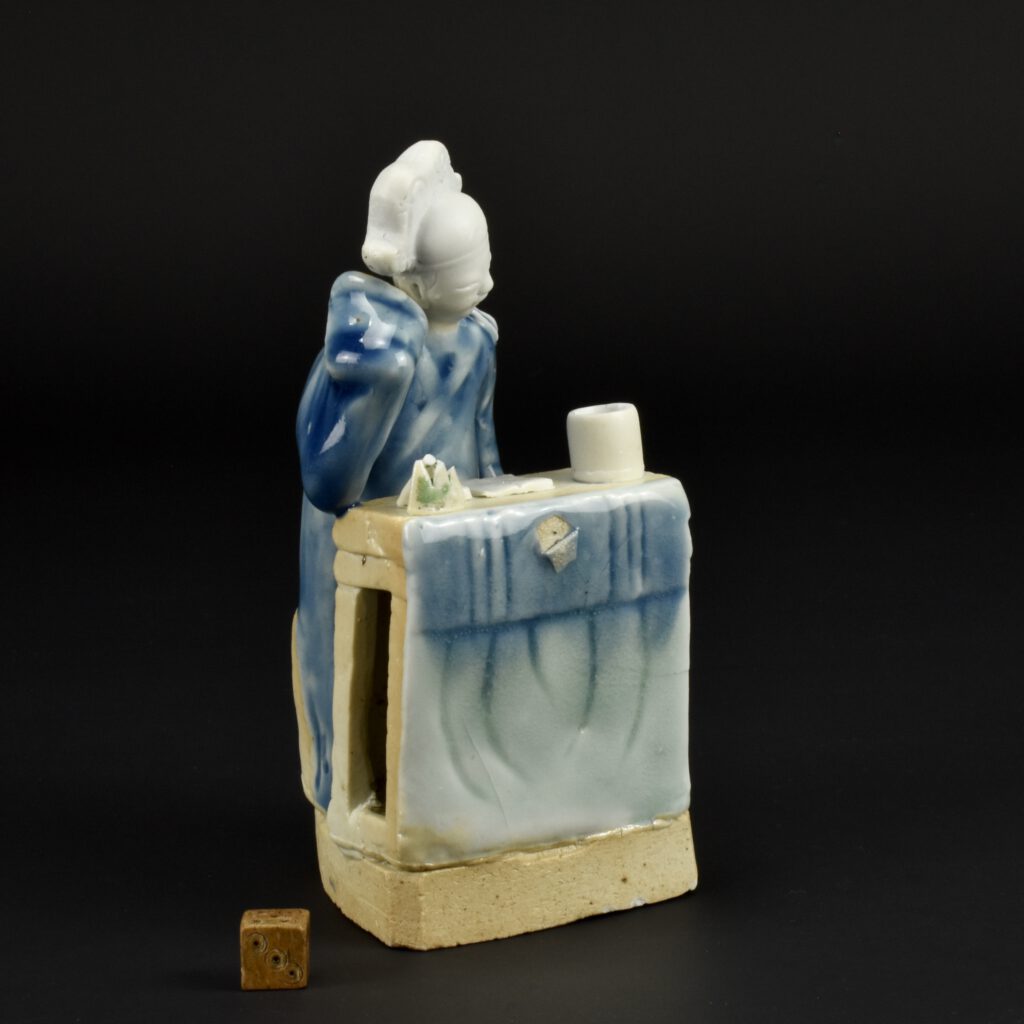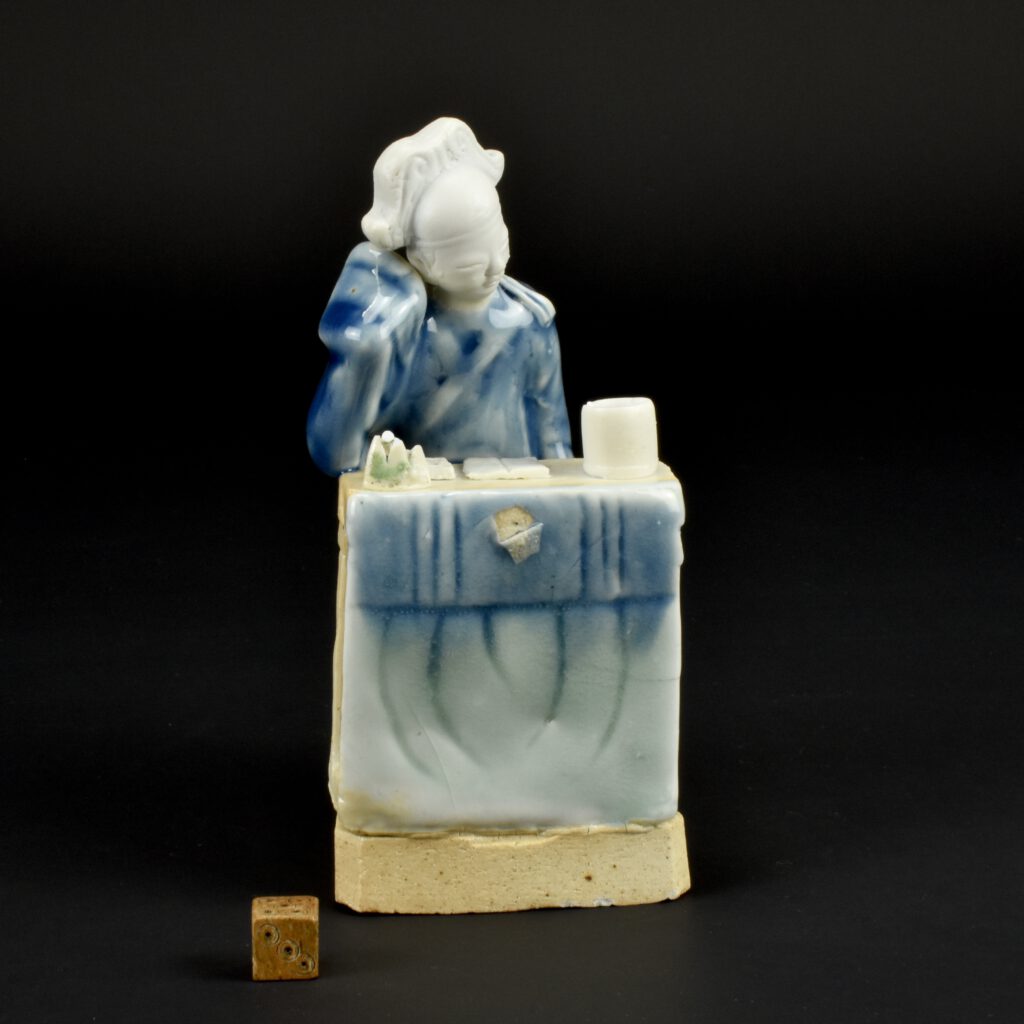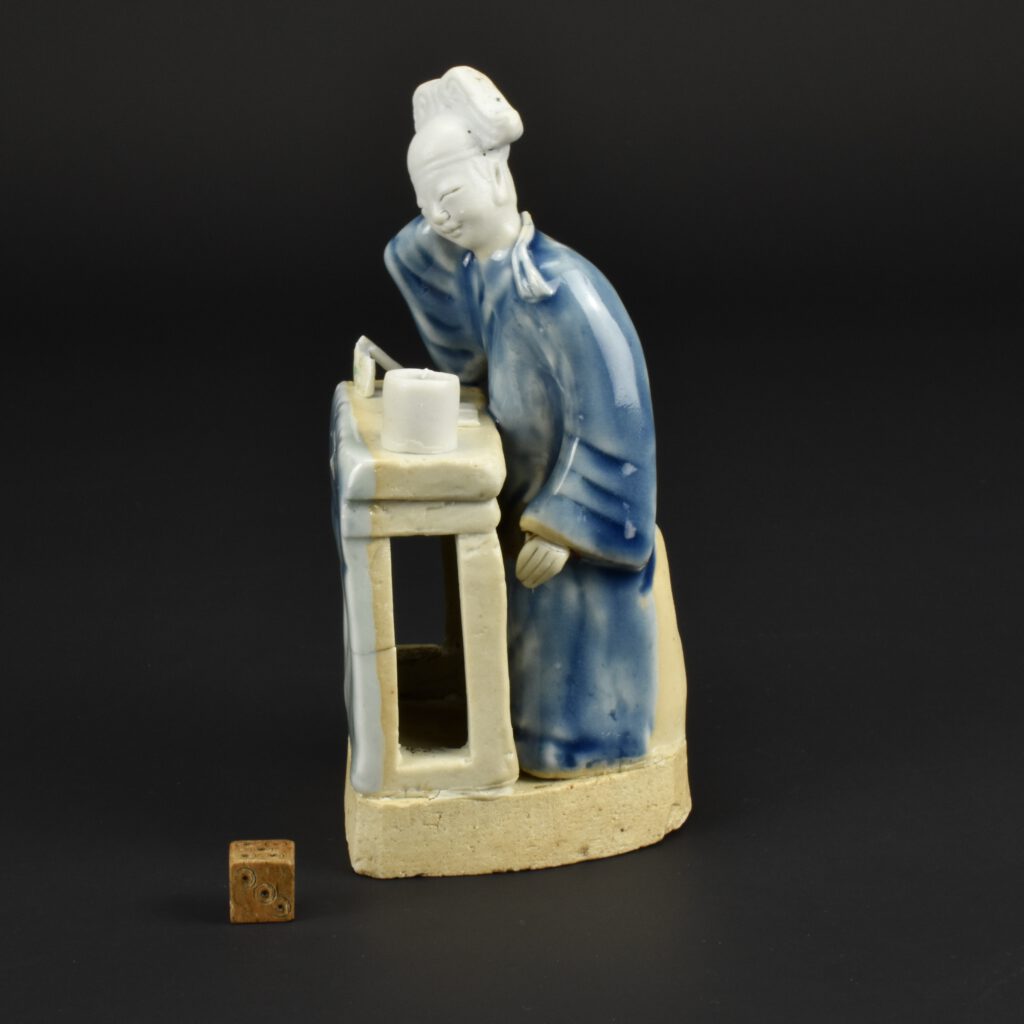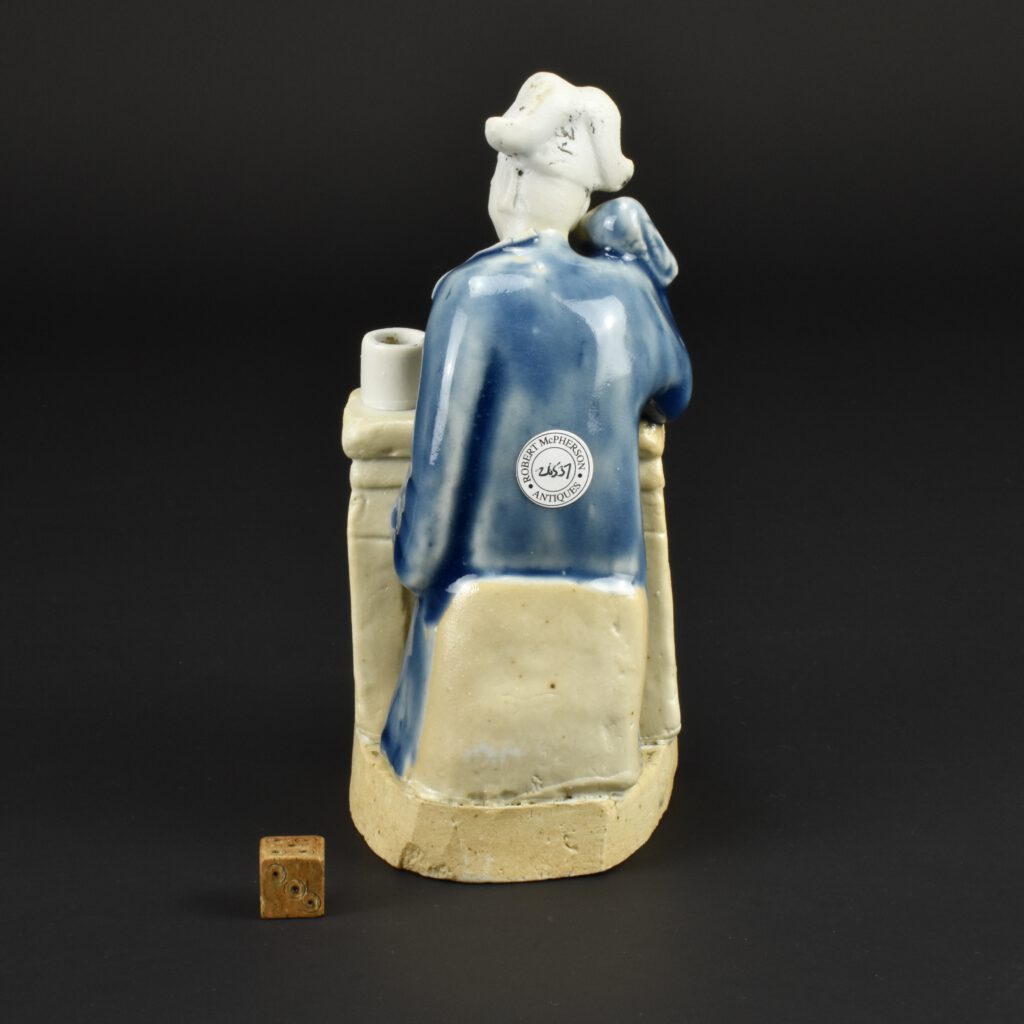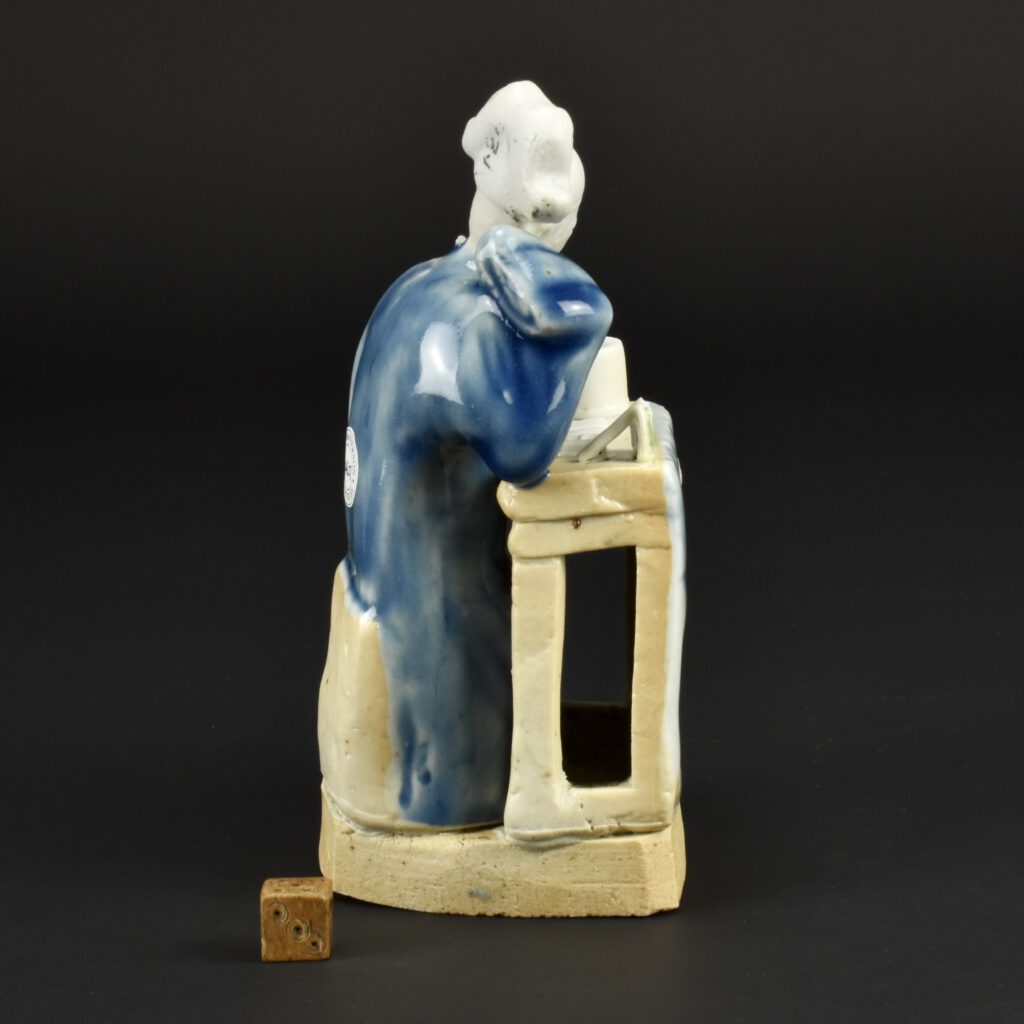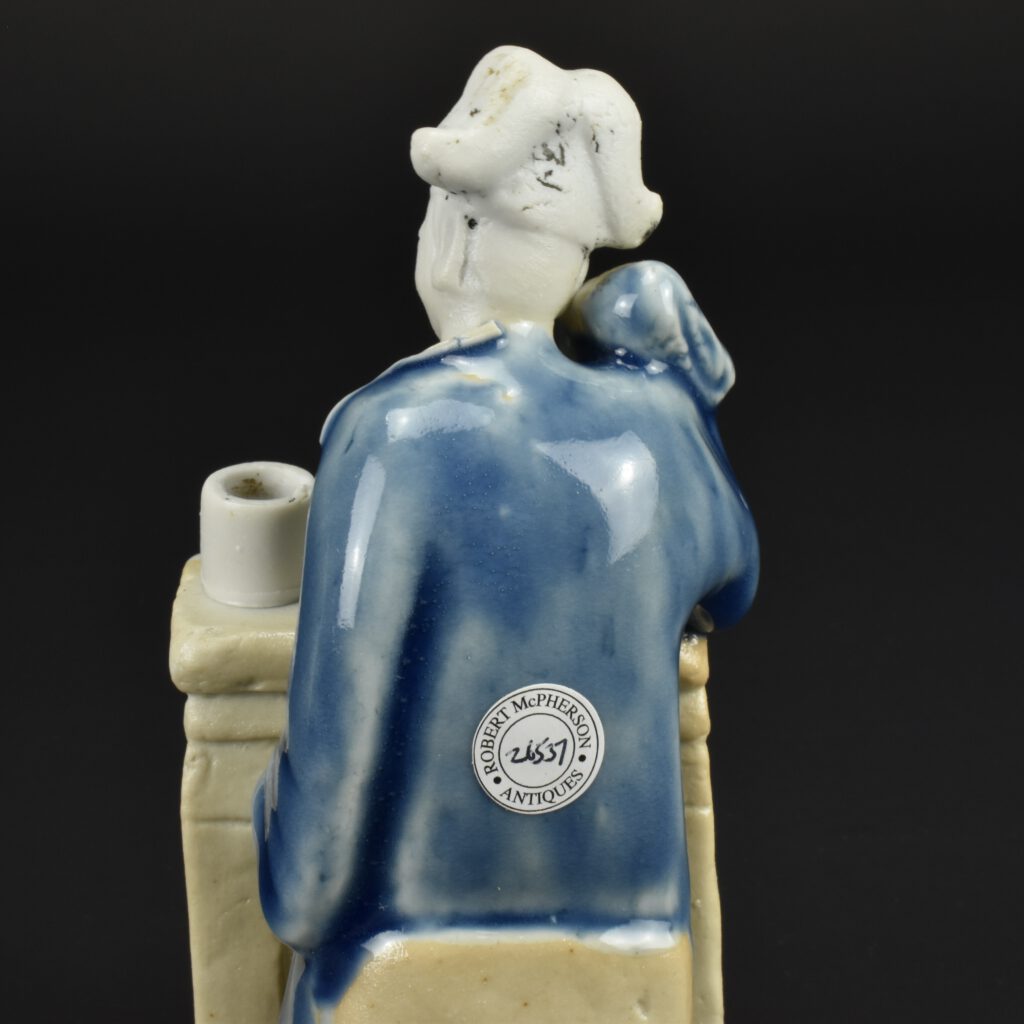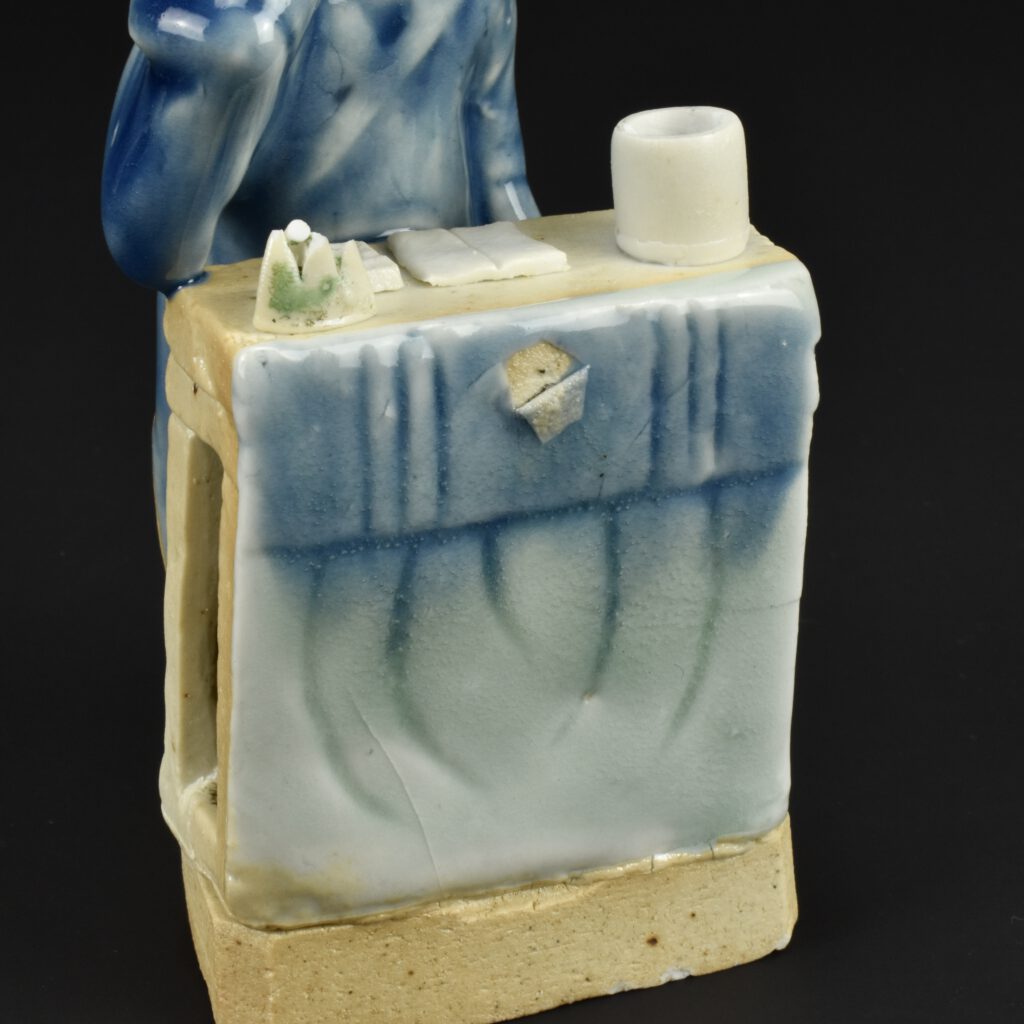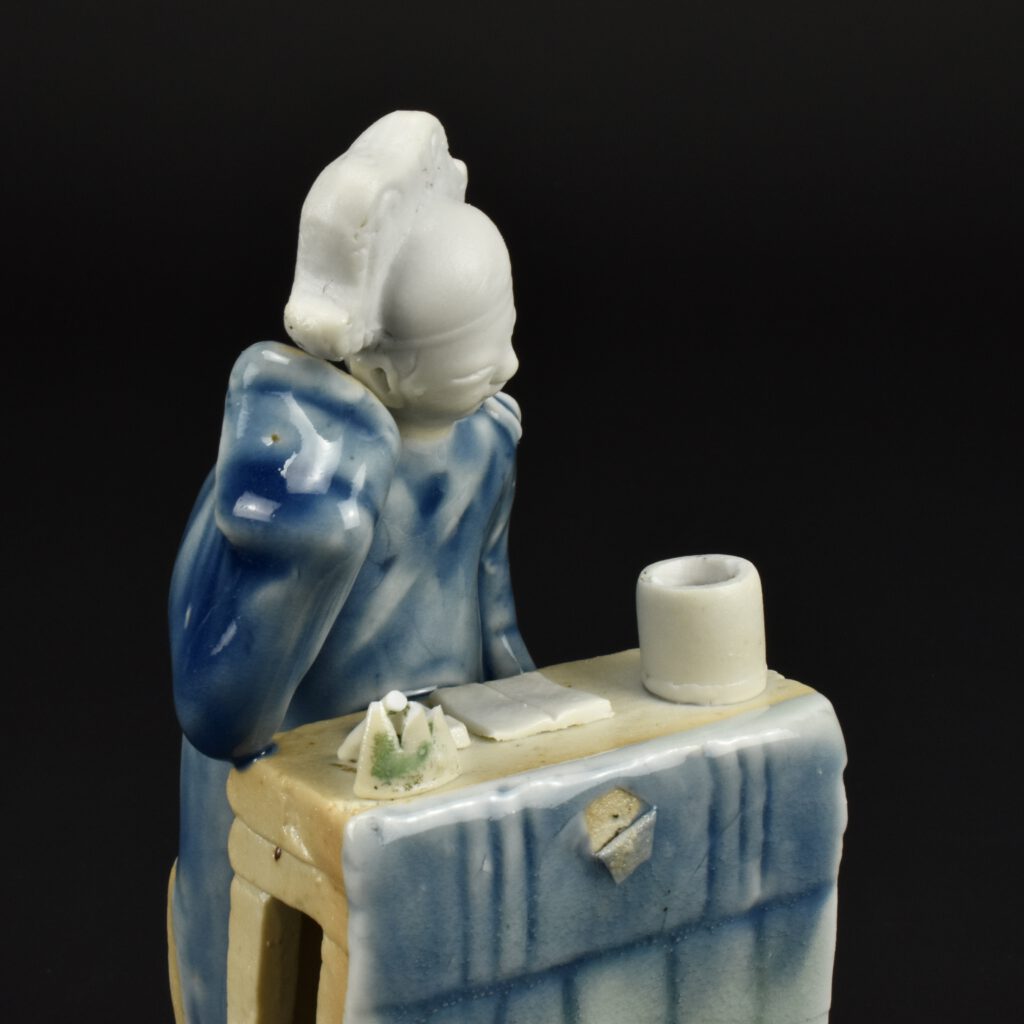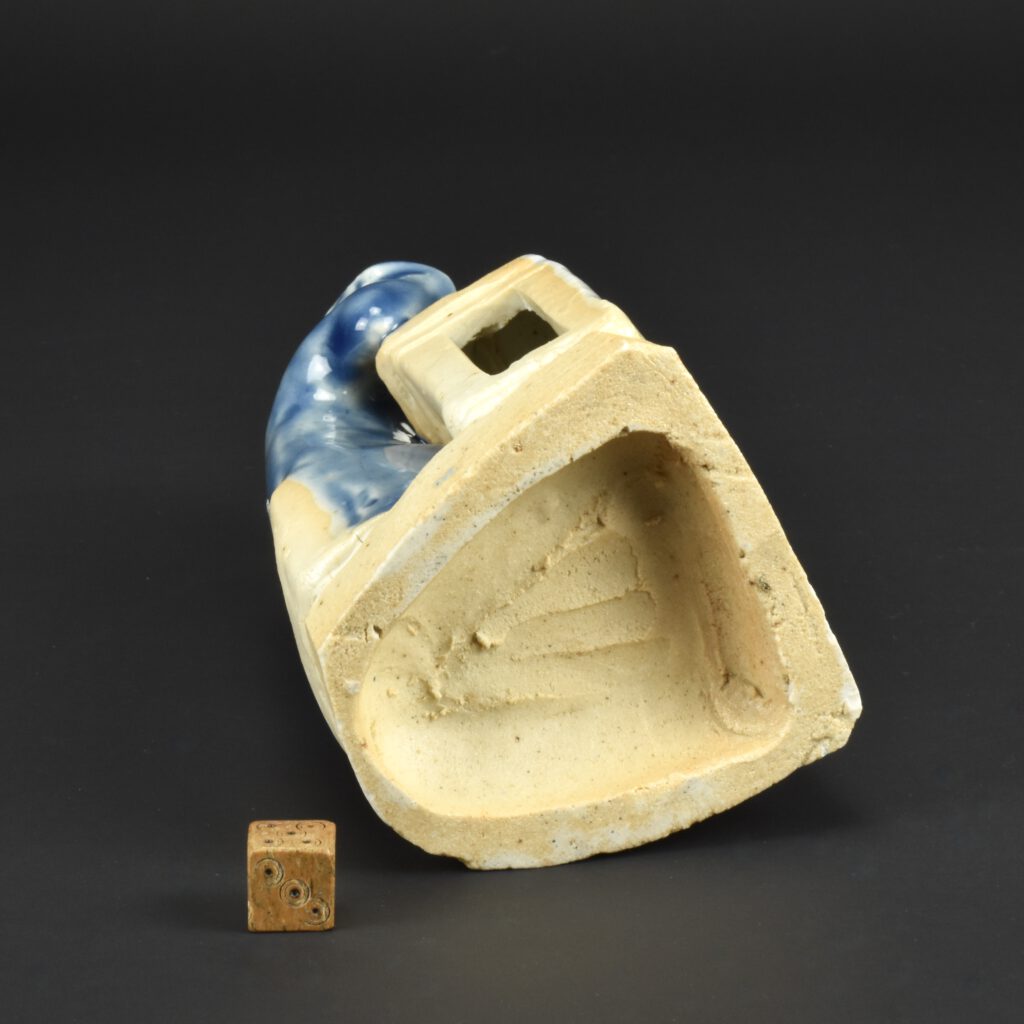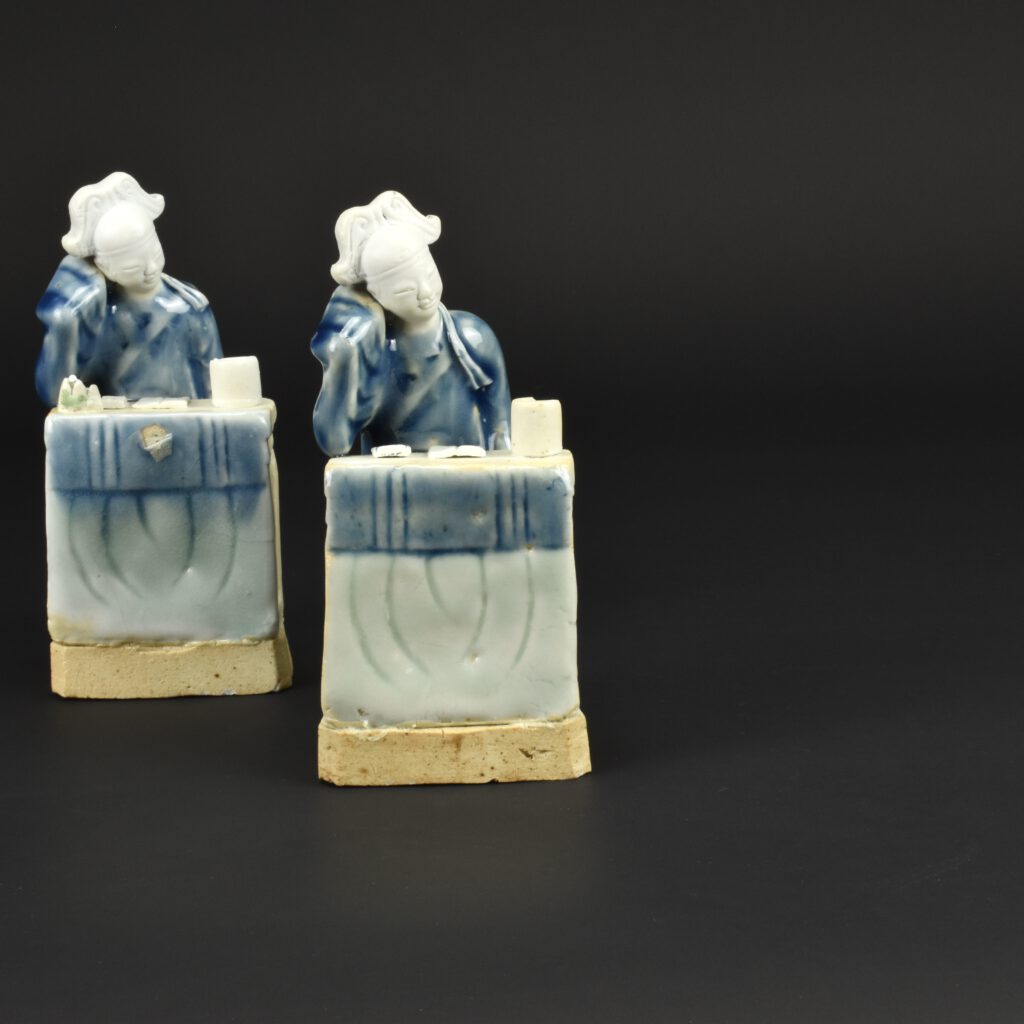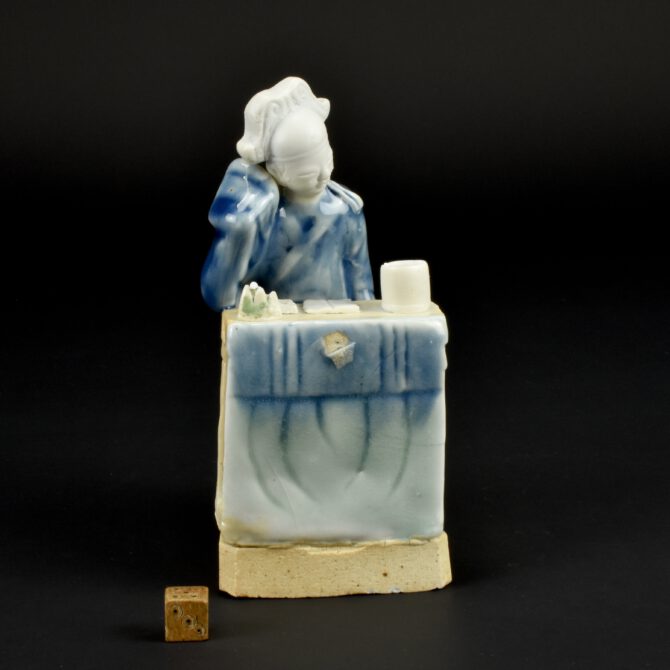
A Rare 18th Century Biscuit Porcelain Figure of a Scholar
A Rare 18th Century Biscuit Porcelain Figure of a Scholar, Yongzheng to Qianlong c.1730-1750. This rare sculptural porcelain model of a scholar asleep at his desk is made from several moulded sections that have been joined together with slip (clay with a very high water content). Small details, for example the scholarly objects on the desk are hand-built, the ribbon casually draped from the back of the hat is also made by hand. The term, biscuit porcelain denotes that the glaze is painted on ‘biscuit fired’ porcelain. The word biscuit, in this context, refers to the slightly rough unglazed porcelain that is left without glaze. Normally this appears a creamy white or a very pale brown, it seems an odd thing to do, but in fact if you look carefully there are often traces of cold painting, which just means it wasn’t fired on. This pigment is effectively a thick watercolour paint, as it is water soluble. This is of course very fragile, it comes off through being touched but there are often small areas of pigment remaining in more protected areas, such as incised lines and folds in fabric. This figure retains some traces of unfired pigment. Figures of this type are sometimes dated to the Kangxi period, however the construction, modelling and glaze colour, closely match rare Private Trade (privileged private trade by the officer class) figures recovered from The Nanking Cargo. They are also similar to figures from the Yongzheng period, in my opinion a Kangxi date is rather early, and I wouldn’t know what close references to use that would support a Kangxi date. See below the Photograph Gallery for more References.
The term `Scholar’s object` refers to something used by a Chinese scholar in his or her studio, it includes everything from scroll-tables, desks, screens, and chairs to the smaller objects found on the scholar’s desk. The material used for these desk objects varied greatly, from bamboo to stone, ivory, wood, and metal, but ceramics were by far the most commonly used material, even though ceramics rated lowest in ranking of importance. Bamboo, ivory, or wood might not be durable enough and metal was sometimes too heavy but ceramic objects could be thrown or moulded into an infinite variety of forms. Most of the objects made centred around the functions of writing and painting. Brushpots of different sizes and shape were needed to take the various types of brush, the same applies to brush rests. Water-droppers for adding water to dry solid ink when it was ground on an inkstone, as well as the inkstones themselves were all needed, as were water-pots and brush-washers. All of these could be made of porcelain. But these were not merely functional items, they conveyed symbolic mean, often enhancing scholarly virtues and the wish for longevity. They were meant to inspire the writer, poet, and artist but it is clear they could also exhibit a great sense of humour, sometimes having almost childlike quality. Objects for the scholar’s desk were made from many different ceramic bodies, during the Song Dynasty (960-1279) Qingbai porcelain was most frequently used, often in moulded forms. Blue and white porcelain objects became popular from the Ming dynasty onwards. By 17th and early 18th century, Blanc de Chine, and biscuit porcelain with coloured glazes such as green, aubergine or turquoise were also popular. Some of these objects were shipped to Europe at the time. The records of the Dashwood, a British trading vessel, were sold at in September 1703, this Supra-cargo, include 10,800 `square toys`. These were Blanc de Chine seals, I have bought and sold many of these over the years. Some are uncut, some have mould seals to the base and could have been used in China, there seals that were engraved, its likely these were not exported. However, the label, ‘square toys’, shows that in Britain they were seen as novelties to show friends and to be on display in cabinets. I’m not sure if the Chinese scholarly class would have approved.
SOLD
- Condition
- In good condition, the 'Three Mountain' brush rest on the table is chipped. The brushes from the brushpot are missing. A flap of blue glaze on the cloth covered table hasn't adhered well and has folded over on itself. A very fine glaze crack to the celadon coloured fabric hanging from the desk, this only shows in very bright light.
- Size
- Height 15.1 cm (6 inches). Depth 6.3 cm.
- Provenance
- N/A
- Stock number
- 26537
- References
- A Very Similar Rare 18th Century Chinese Biscuit Porcelain Model of a Scholar (some restoration to the scholar's utensils). Sold at Woolley and Wallis, Salisbury, England, 23rd of November 2021 for £7,000 + Buyer's Premium. See below the Photograph Gallery for more details. Another of these rare figures dated to the Kangxi period, or the same one, from Jorge Welsh is illustrated in : Brushpots - A Collector’s View (Sam Marsh. Publisher CA Book Publishing. ISBN 9789887440895) frontispiece.
Information
A Very Similar Rare 18th Century Chinese Biscuit Porcelain Model of a Scholar (some restoration to the scholar's utensils).
Sold at Woolley and Wallis, Salisbury, England, 23rd of November 2021 for £7,000 + Buyer's Premium.
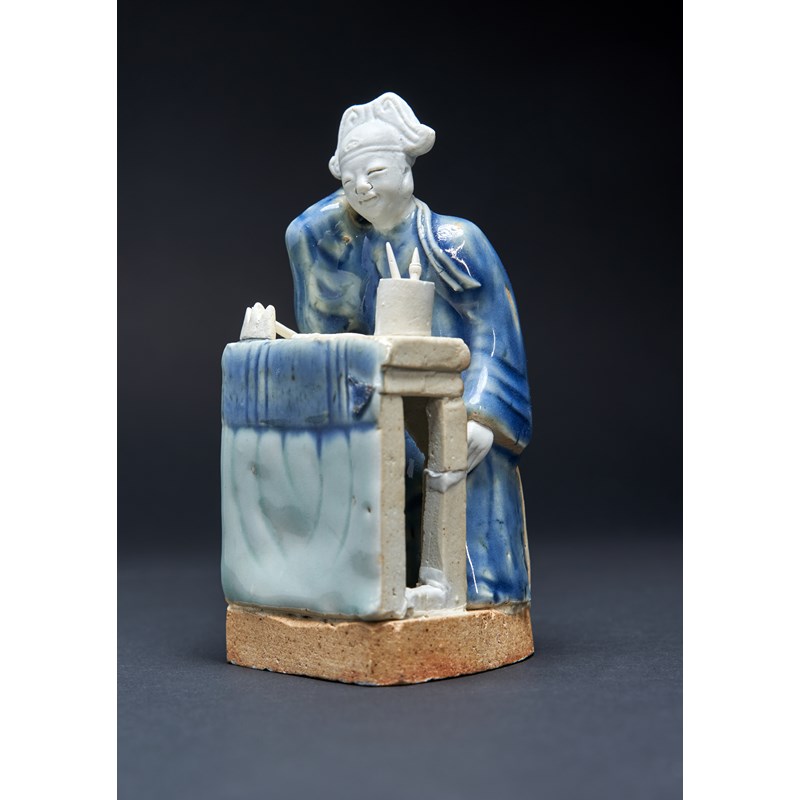
A Similar Type of Figure from The Nanking Cargo, Qianlong c.1751.
A Rare Chinese Porcelain Figure from the Geldermalsen 'Nanking Cargo' Shipwreck. Robert McPherson Antiques, Sold Archive Number 27287.
Qianlong Period c.1751, Probably Jingdezhen Kilns. Sold at Christie’s Amsterdam in 1986, this very rare figure from the cargo sold for Fl.22,040 (Dutch Guilders) equivalent to €10,000 (£8,728) in 1986. A Chinese export porcelain porcelain figure of a woman standing on a plinth, the biscuit porcelain has areas that are glazed in celadon green and cobalt blue. The undecorated biscuit porcelain face was perhaps originally cold-painted. This Chinese porcelain figure is illustrated on the front cover of the Nanking Cargo catalogue, and in the catalogue as well as in several books (see References) This is a very rare survival from the wreck of the V.O.C. (Verenigde Oostindische Compagnie) ship the Geldermalsen, referred to as The Nanking Cargo, would have be part of the privileged Private Trade allowed by V.O.C. to the Captain and officers of the ship. This figure is illustrated in the Christie’s catalogue of the action of 1986, and Dr. Christiaan Jörg’s book ‘The Geldermalsen, History and Porcelain’ and also ‘The Nanking Cargo’ by Michael Hatcher with Antony Thorncroft (see references). Fragile objects like this figure pf a woman was stored away safely by the officers, they were allowed to sell them to supplement their income from the V.O.C.
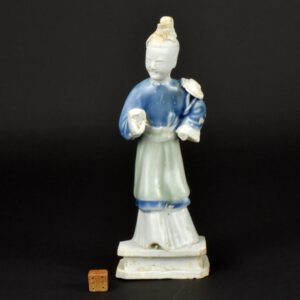
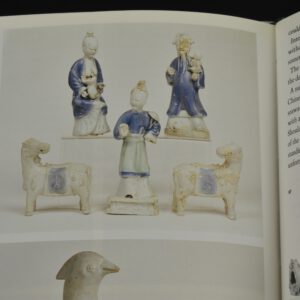
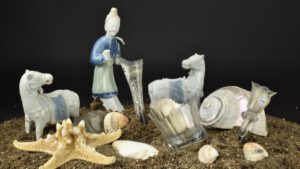
Brushpots: A Collector’s View
By Sam Marsh.

Publisher: CA Book Publishing
ISBN: 9789887440895
Number of pages: 288
Weight: 1626 g
Dimensions: 282 x 239 mm
